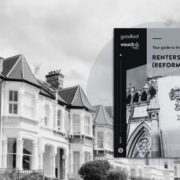EU natural gas prices have risen like a rocket this summer and although they’ve retreated a little from a peak earlier in the week, they are close to record highs, almost 20% higher than the level they reached soon after the invasion of Ukraine.
This piles more pressure on beleaguered European economies so reliant on gas to fuel energy intensive industries.
Runaway gas prices are set to fan the fires of inflation again across Europe, adding to expectations of energy rationing.
EU energy ministers have already backed a voluntary 15% reduction in gas usage over the winter but with Russia expected to further reduce flows, there is also the prospect that EU states will declare energy emergencies to trigger immediate cuts.
UK gas prices have eased off a little but still remain close to the high they reached in March.
This painfully elevated level of wholesale prices will intensify the clamour for the government to come up targeted help to avoid a catastrophic winter for households.
A state backed loan scheme to enable utility firms to freeze bills is one of the plans on the table, but the government appears in limbo amid the vote for a new Conservative party leader and Prime Minister.
Far from being a short term crisis, companies and consumers will now have to prepare for long haul turbulence, with grim forecasts the energy crisis could last for another three years.
Britain’s National Grid is reportedly using that timeline to draw up emergency plans to try and avoid uncontrolled blackouts by incentivising large industrial firms to cut gas use every winter until 2025.
It’s also doubled the length of its annual disaster drill to four days, to simulate supply threats and test the network’s resilience.
The industry is adopting the brace position as the scale of the potential emergency becomes clear.
Caution is the name of the game on equity markets with expectations that aggressive policies to tame roaring inflation will continue despite fresh signs that the US economy is slowing.
The dramatic fall in the S&P Global composite PMI in August highlighted how demand was falling for the US services sector in particular as supply chain snarl ups, inflationary pressures and interest rate hikes took their toll.
The ultimate impact of this drop in demand should be deflationary but it’s not clear how far and how fast these trends will feed through to lower headline prices.
The data sparked a squally session on Wall Street as investors assessed the darker clouds gathering over the US economy, and signals from central bank policymakers that more rate hikes were ahead to try and ensure the inflation storm subsides.
There are expectations that the chair of the Federal Reserve Jerome Powell will underline that message at annual central bank gathering at Jackson Hole, Wyoming on Friday.
The FTSE 100 has retreated at the open amid a fresh round of risk off sentiment and worries about the prospects for global trade.
Although oil prices have dropped from February highs amid signs of the global slowdown, prospects for sustained relief from eye watering prices at the pumps still remain elusive as crude oil marches back up again over supply concerns.
A barrel of the benchmark Brent crude is heading back towards $100 dollars a barrel amid a drop in US stockpiles and a warning from OPEC about a potential production cuts.
Saudi Arabia mooted possible reductions in output as a counter to the recent downward slide in prices, and the American Petroleum Institute noted late yesterday that inventories had fallen by 5.6 million barrels last week, a bigger slide than expected.





















Comments